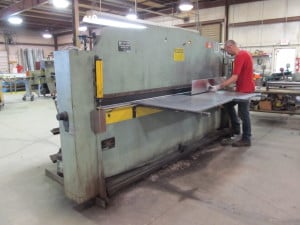With business growth comes the need for innovation and adaptation. The fabrication processes that worked a year ago, or even last quarter, may not be efficient enough for today’s demands of your operation. Some considerations for the growing business include developing a new workflow, retraining or hiring staff, and of course, replacing equipment with more suitable alternatives.
In an HVAC fabricator’s workplace, the sheet metal hand brake is a fundamental piece of the operation. Here are some factors to consider when evaluating if your traditional handbrake is keeping up – or delaying your growth.
How Many Operators are Tied to One Job?
With a traditional sheet metal bender, you likely require two operators to ensure proper execution of work. As client demands grow, you have more cause to divide and conquer. If bending could be performed by a single operator, that additional staff member can be used to address another business need.
Can You Switch Operations on the Fly?
Replacing the dies on a conventional hand brake requires a complete stop to production. It takes time to remove the tooling, select the correct die from your inventory, replace the tooling, then make adjustments to begin the next batch of bends. How much is that lost time costing you over the course of a project?
Are You Prepared for Various Bends?
Some bends, like an acute reverse bend, just can’t be performed on a wide-bend machine. Sure, if a client needs that bend, you’ll come up with a creative way to get it done, but having machinery that can apply these bends at a moment’s notice is a boon not only to your fabrication process, but your ability to provide the best customer service.
How Quickly Are Bends Being Performed?
A few factors contribute to the overall output of a bender. Setup time and die changes, as mentioned above, make a big difference, as well as how easily pins can be relocated during positioning metal for cross-braking. Measure your strokes per minute with a conventional hand brake – if you’re coming in anywhere below 10 bends per minute, it’s a sign you’re in need of a faster process.
When you’ve done your tests and the dust has cleared, see how your traditional hand brake measures up to your alternatives, like a hydraulic bender from Roto-Die. The more versatile and productive your equipment, the more profitable your duct fabrication operation will be.

